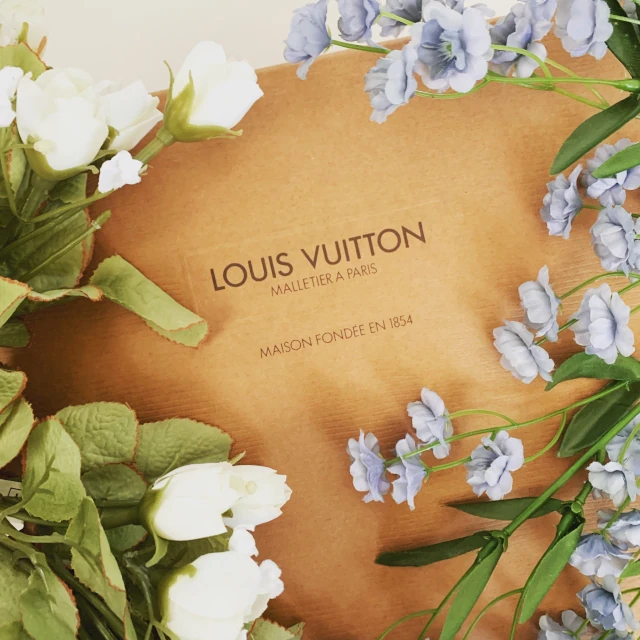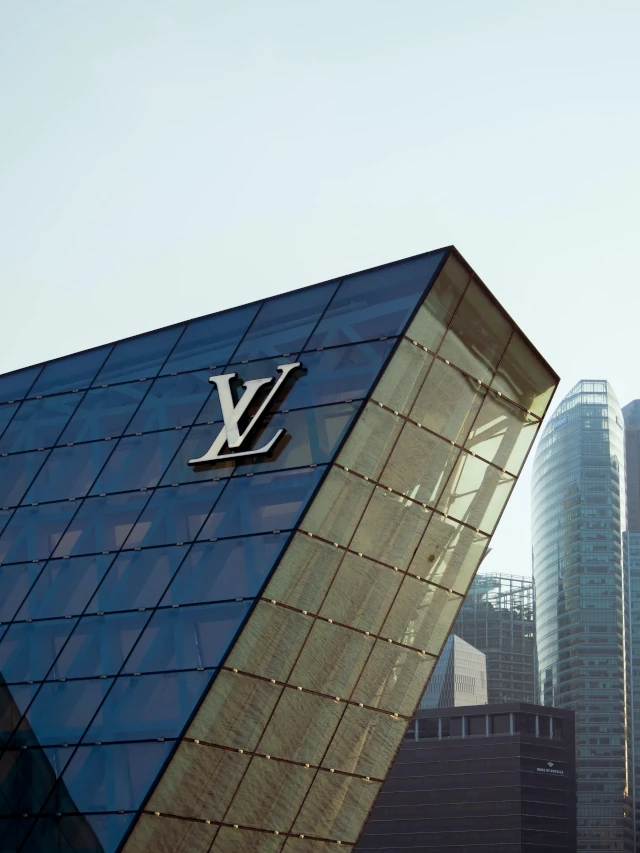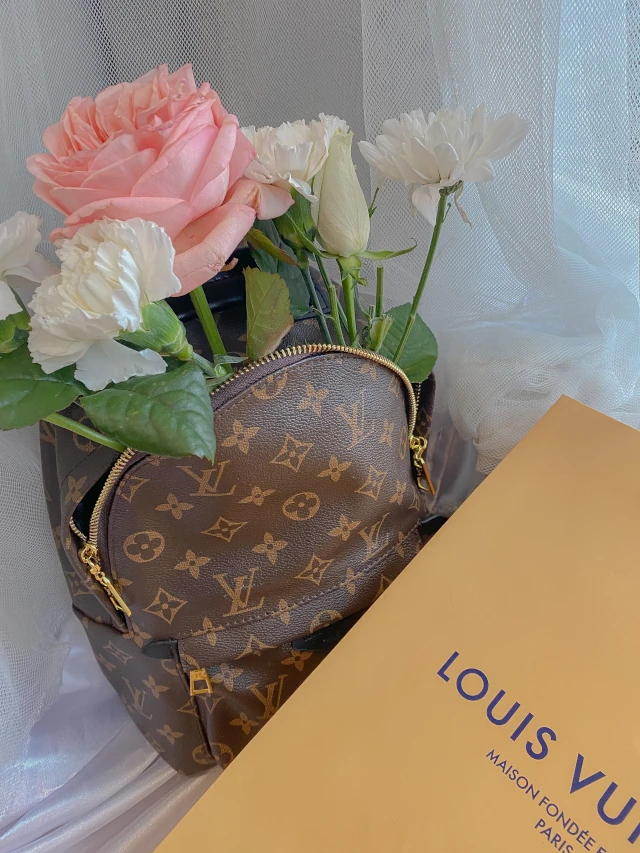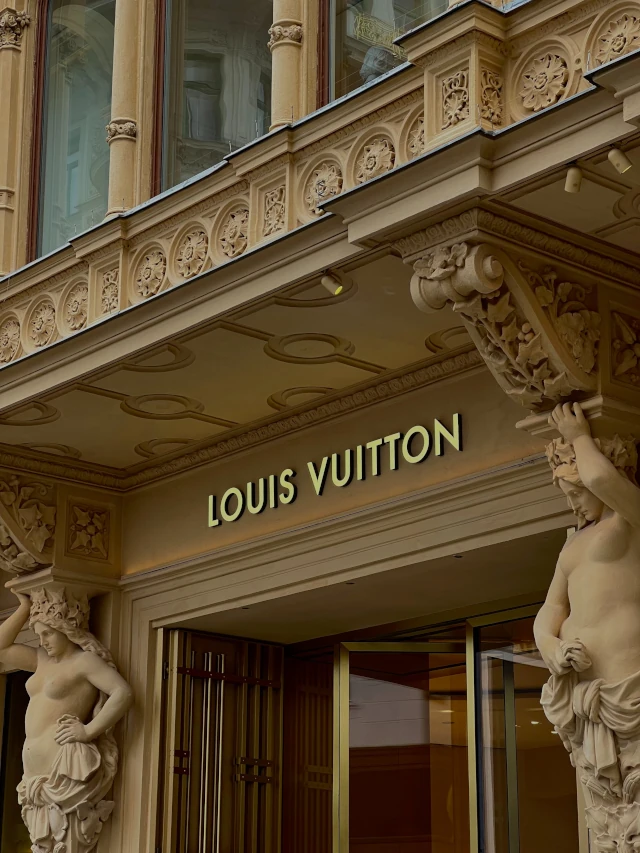Louis Vuitton, a name synonymous with luxury and sophistication, has been at the top table in the world of fashion and accessories for over a century. Beyond its iconic monogram and timeless designs, Louis Vuitton’s unparalleled success can be attributed to a meticulously crafted marketing strategy that has consistently captivated the hearts of the global elite. Let’s explain the key elements of Louis Vuitton’s marketing strategy which have contributed to its esteemed position in the luxury fashion industry.

Heritage and Brand Identity
Louis Vuitton’s brand identity is steeped in history and luxury. The brand was founded in 1854 by Louis Vuitton, a visionary trunk maker who revolutionized the art of travel. Since then, the brand has expanded its product range to include fashion, accessories, shoes, watches, jewelry, and fragrances, all bearing the iconic LV monogram and distinctive design elements.
The brand’s identity is based on four core values: quality, craftsmanship, exclusivity, and innovation. Louis Vuitton products are made from the finest materials and with high standards of quality and durability. It’s craftsmanship is evident in its meticulous attention to detail, its use of traditional techniques, and its constant quest for excellence. The brand’s exclusivity is reflected in its premium pricing, its limited edition collections, and its strategic partnerships with celebrities, artists, and events. Innovation is demonstrated by its ability to adapt to changing consumer needs and preferences, its introduction of new products and categories, and embracing new technologies.
Louis Vuitton’s brand identity is one that combines heritage and modernity, elegance and functionality, and sophistication and creativity. The brand is synonymous with luxury, prestige, and style, and has a loyal and aspirational customer base around the world.
Exclusivity Reigns Supreme
The French fashion house is synonymous with luxury and prestige, and carefully guards its image of exclusivity. This isn’t just built on hefty price tags and impeccable craftsmanship; a meticulously controlled distribution strategy plays a crucial role. How Louis Vuitton orchestrates this exclusivity:
A Selective Retail Network
Unlike many luxury brands that readily partner with department stores, Louis Vuitton maintains a tightly curated network of flagship stores and authorized retailers. These stores are strategically located in upscale shopping districts, often housed in architecturally stunning buildings that exude an air of sophistication. This selective approach ensures that owning a Louis Vuitton piece feels like joining a prestigious club, not just a shopping spree.
Limited Production and Releases
Louis Vuitton doesn’t mass-produce its items. Instead, they employ a scarcity model, releasing limited quantities of specific products or collections. This creates a sense of urgency and desirability, as customers know that if they don’t act fast, they might miss out on a coveted piece. This strategy also fuels hype and anticipation, further adding to the brand’s allure.
Waitlists and Special Access
For certain highly coveted items, Louis Vuitton may implement waitlists or require special appointments to purchase. This adds another layer of exclusivity, making ownership feel like a privilege rather than a right. It also allows the brand to control the customer experience, ensuring that each purchase is personalized and memorable.
Regional Variations and Cultural Nuances
Louis Vuitton tailors its product offerings and marketing strategies to different regions and cultures. This ensures that the brand remains relevant and desirable in diverse markets while still maintaining its core values of exclusivity and luxury. For example, certain collections or designs might be exclusive to specific regions, further adding to the sense of uniqueness.

Mastering the Online Experience
While Louis Vuitton values its physical stores, it also recognizes the power of the digital world. The brand’s online platform is an extension of its exclusivity strategy. Customers can browse limited-edition items, access exclusive content, and even participate in virtual experiences that deepen their connection to the brand.
By carefully controlling its distribution channels, production quantities, and customer access, Louis Vuitton cultivates an aura of exclusivity that fuels its brand identity and desirability. Owning a Louis Vuitton piece is more than just a purchase; it’s a statement of belonging to a select group who appreciate the brand’s heritage, craftsmanship, and unwavering commitment to luxury.
This strategy isn’t without its challenges. Maintaining such tight control requires significant resources and expertise. However, for Louis Vuitton, the rewards are clear: a loyal customer base, unwavering brand loyalty, and a position at the pinnacle of the luxury fashion world.
Celebrity Endorsements and Ambassadors
Louis Vuitton strategically employs celebrity endorsements and brand ambassadors as a crucial element of its marketing strategy, leveraging the influence and star power of iconic personalities to enhance the brand’s image and desirability.

The company carefully selects celebrities with global appeal, transcending geographic and cultural boundaries. By featuring personalities from diverse fields such as film, sports, music, and fashion, the brand ensures that its message resonates with a broad and varied audience.
Celebrity endorsements position Louis Vuitton products as symbols of aspiration and success. When renowned figures are seen wearing or endorsing Louis Vuitton items, this creates a connection between the brand and the aspirational lifestyles of the consumers. This association with success can influence consumer perceptions and contribute to the brand’s premium status.
Authenticity and Alignment with Brand Values
Louis Vuitton carefully selects ambassadors whose personal values align with the brand’s image of luxury, elegance, and craftsmanship. This alignment ensures authenticity in the partnership, making it more convincing and resonant with consumers. For instance, choosing ambassadors known for their style and sophistication reinforces the brand’s commitment to timeless fashion.
It often collaborates with celebrity ambassadors to create limited-edition collections. These exclusive partnerships produce unique and highly coveted items that carry the celebrity’s influence. The collaborative collections generate excitement among consumers and collectors, driving demand for the brand’s products.

Celebrity partnerships are used to tell compelling brand stories. Whether through carefully crafted advertising campaigns, social media content, or behind-the-scenes glimpses, the brand weaves narratives that showcase the intersection of luxury, creativity, and the celebrity’s personal connection with Louis Vuitton.
Red Carpet Presence
The brand capitalizes on the global attention garnered by celebrities during high-profile events like award ceremonies and fashion shows. Louis Vuitton’s presence on red carpets, with ambassadors adorned in its creations, ensures that the brand remains in the spotlight, reinforcing its association with glamour and sophistication.
Louis Vuitton also leverages the social media influence of its celebrity ambassadors to connect with a wider audience. Ambassadors often share their experiences with Louis Vuitton products on their platforms, reaching millions of followers and creating a digital ripple effect that amplifies the brand’s visibility and desirability.
Adept Use of Digital and Social Media
Louis Vuitton embraced the digital age, recognizing the importance of digital and social media channels in reaching a global audience, engaging consumers, and maintaining a contemporary brand image.
The official website serves as a central hub for its digital presence. The site is designed with a luxurious aesthetic, providing an immersive online experience reflecting the brand’s commitment to quality and craftsmanship. Consumers can explore the latest collections, access behind-the-scenes content, and make online purchases, reinforcing the brand’s accessibility.

Louis Vuitton’s presence on major social media platforms such as Instagram, Facebook, Twitter, and YouTube shares visually captivating content, including high-quality images, videos, and stories that showcase the brand’s products, events, and collaborations.
The brand strategically collaborates with influencers and fashion bloggers who align with its image. These influencers share their experiences with Louis Vuitton products, creating a ripple effect that extends the brand’s reach to their followers. This approach allows it to tap into different demographics and connect with younger audiences.
Digital Advertising Campaigns
Louis Vuitton invests in digital advertising campaigns to promote its collections and reinforce key brand messages. These campaigns may include banner ads, sponsored content, and video advertisements strategically placed on high-traffic websites and social media platforms. The use of targeted digital advertising ensures that the brand reaches its desired audience.
The brand has seamlessly integrated e-commerce into its digital strategy, allowing consumers to browse, select, and purchase Louis Vuitton products online. The online shopping experience mirrors the exclusivity of the in-store experience, with features such as virtual try-ons and personalized recommendations enhancing the digital customer journey.
It engages audiences through interactive and immersive content. This includes 360-degree views of products, virtual tours of flagship stores, and interactive elements in digital campaigns. By providing engaging content, the brand ensures that its digital presence goes beyond static imagery, creating a more dynamic and memorable user experience.
Sharing behind-the-scenes glimpses of the design process, craftsmanship, and exclusive events gives followers an insider’s perspective on the brand. This transparency fosters a deeper connection with consumers, allowing them to appreciate the dedication and artistry behind each Louis Vuitton creation.
Live Streaming and Virtual Events
Louis Vuitton has embraced live streaming and virtual events to connect with a global audience, especially during fashion shows and product launches. This approach ensures that enthusiasts from around the world can participate in real-time, creating a sense of inclusivity and excitement.
Louis Vuitton actively engages with its audience through social media by responding to comments, hosting Q&A sessions, and encouraging user-generated content. This two-way communication fosters a sense of community and allows the brand to receive direct feedback from its consumers.
10 Lessons from Louis Vuitton’s Marketing Strategy
Louis Vuitton’s marketing strategy offers valuable insights and lessons that can be applied by other businesses. Here are key takeaways that businesses can consider:
- Craft a Strong Brand Identity: Develop a distinctive and consistent brand identity that reflects the essence of your products or services. Louis Vuitton’s iconic monogram and commitment to craftsmanship have created a lasting and recognizable brand image.
- Embrace Heritage and Tradition: Leverage your brand’s history and heritage to create a sense of authenticity. Louis Vuitton’s emphasis on its founding year, craftsmanship, and legacy contributes to a timeless and trusted brand image.
- Maintain Exclusivity: Create a perception of exclusivity by carefully controlling product distribution and limiting availability. By positioning your products or services as exclusive, you can enhance their perceived value and desirability.
- Strategic Collaborations: Explore partnerships and collaborations that align with your brand’s values. Collaborations can introduce innovative products, reach new audiences, and generate excitement around your brand.
- Create Compelling Content: Develop visually stunning and compelling content that tells a story. High-quality imagery, videos, and engaging narratives can capture the attention of your audience and create a lasting impression.
- Customer Engagement and Interaction: Foster a sense of community by actively engaging with your audience. Respond to customer feedback, encourage user-generated content, and create opportunities for direct interaction to build a loyal customer base.
- Adapt to Changing Consumer Behavior: Stay attuned to shifts in consumer behavior and adapt your strategies accordingly. Louis Vuitton’s embrace of digital platforms and e-commerce reflects an understanding of changing consumer preferences.
- Balancing Tradition and Innovation: Strike a balance between tradition and innovation to stay relevant. While Louis Vuitton emphasizes its heritage, the brand also embraces modernity through collaborations, digital strategies, and innovative product offerings.
- Invest in Retail Experience: If applicable, invest in creating a unique and immersive retail experience. Flagship stores can serve as showcases for your brand, providing customers with a memorable and luxurious environment.
- Consistent Messaging Across Channels: Ensure a consistent brand message across all channels. Whether in-store, online, or on social media, maintaining a unified brand voice reinforces brand identity and helps build trust.
By drawing inspiration from Louis Vuitton’s successful marketing strategy, businesses can tailor these principles to their specific industries and goals, fostering a brand image that resonates with consumers and stands the test of time.

